Nap Time
/Moms are eating. Babies are napping.
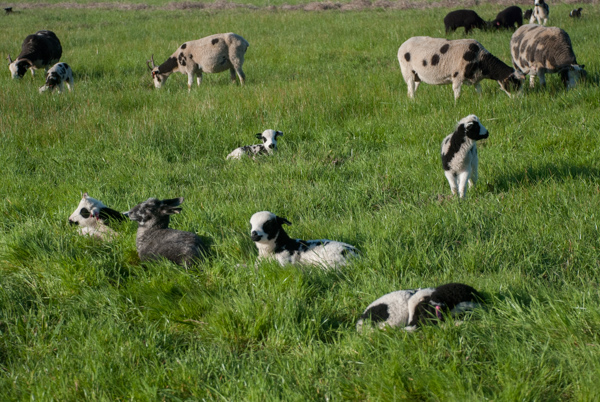
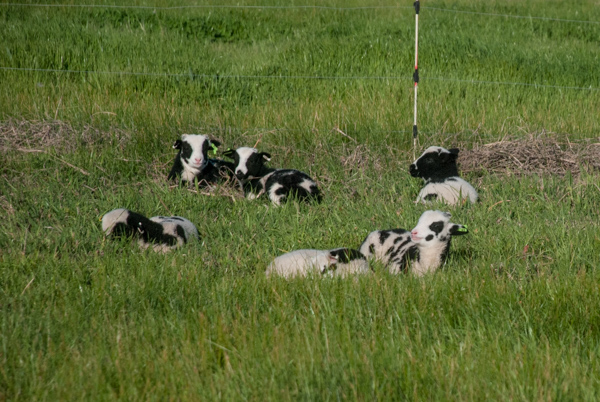
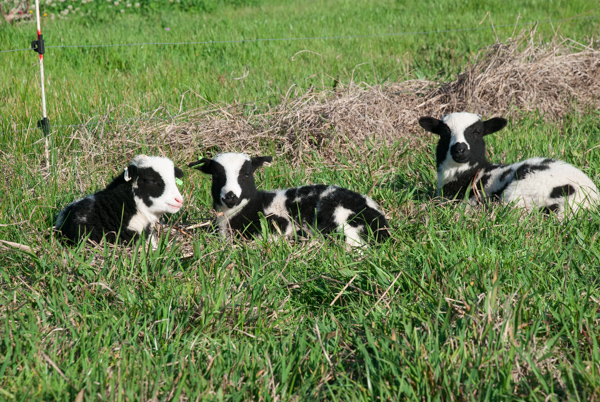
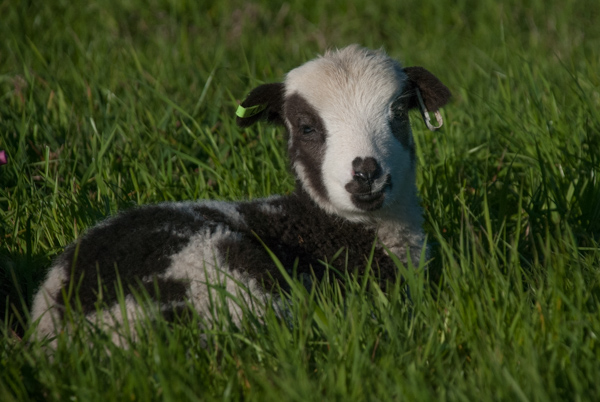
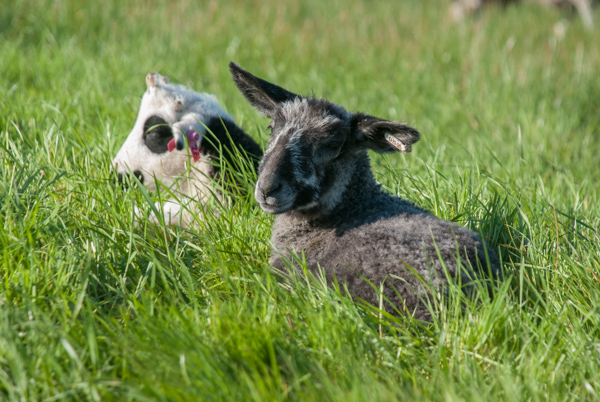
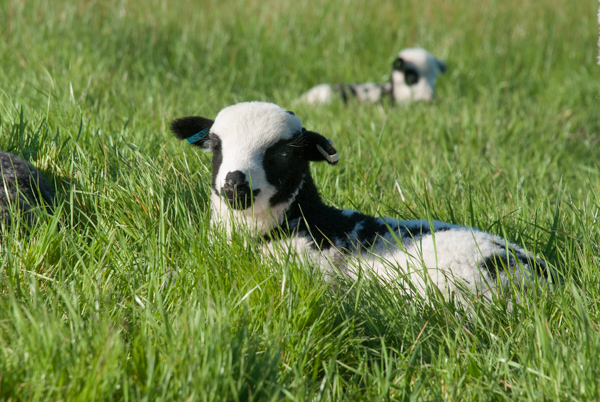
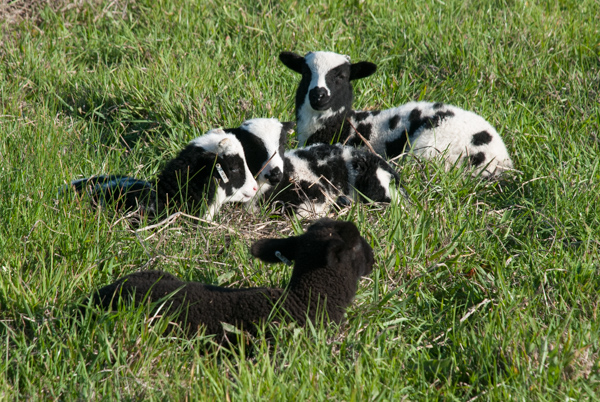
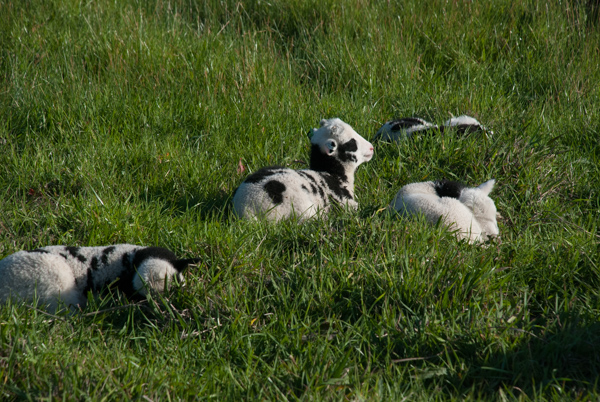
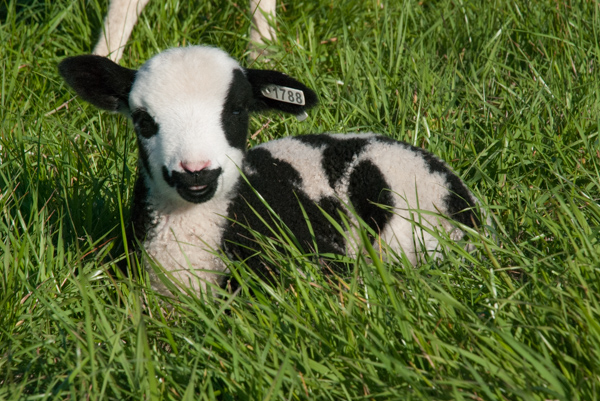
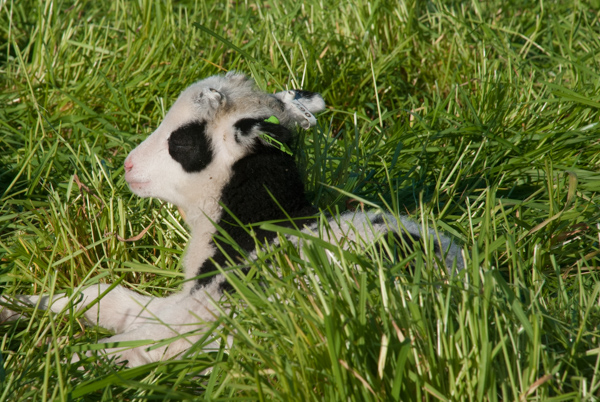
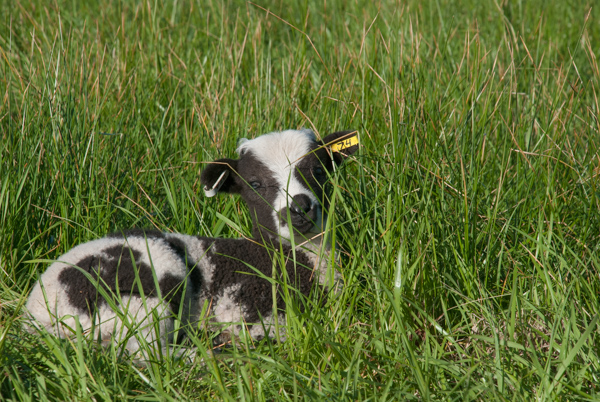
I took these photos before it started raining again.
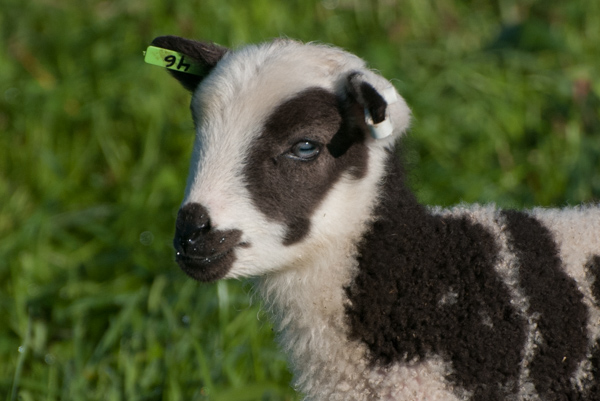
A cute blue-eyed lilac lamb. This is on the "keep" list. Meridian Catalyst x Shadow Mountain Shelby.
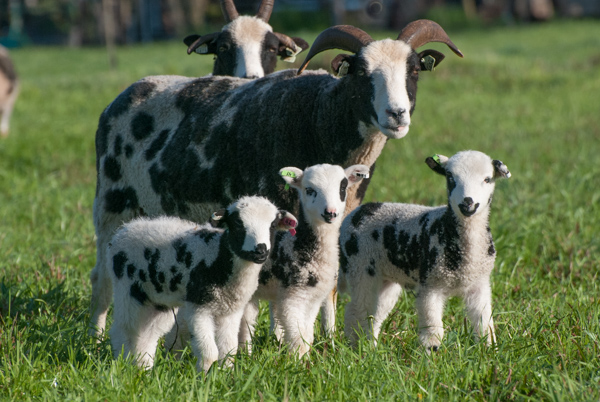
Meridian Hot Lips with triplets also sired by Catalyst.
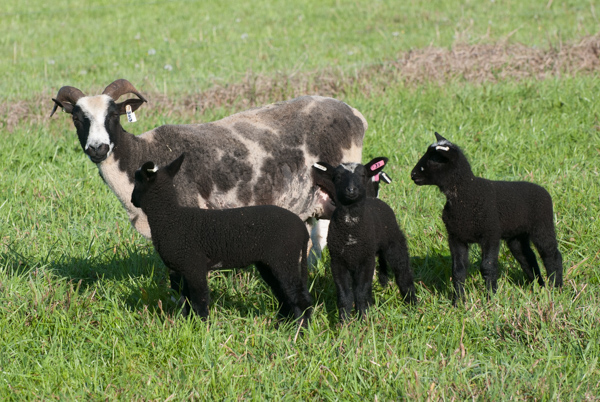
Meridian Sophia with BFL-x triplets.
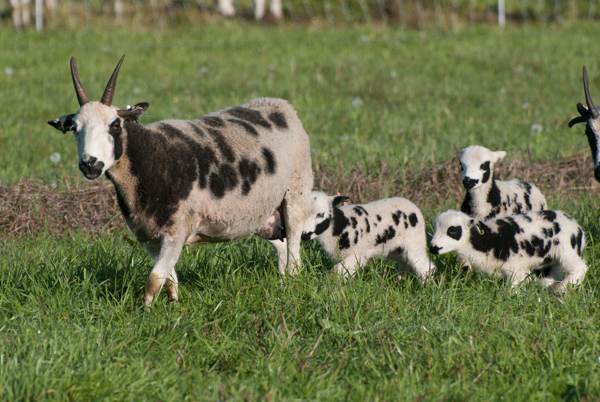
Meridian Sonata with triplets sired by bide a wee Buster.
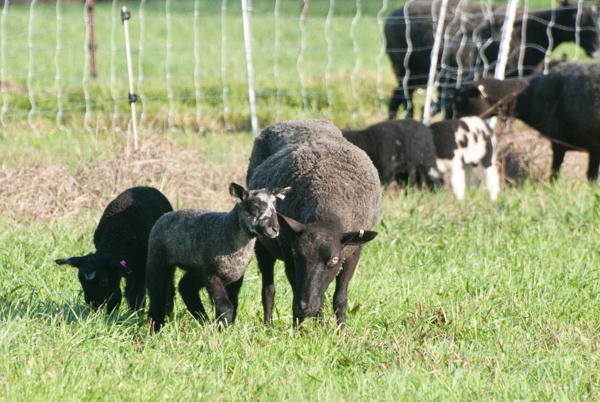
Ears and her crossbred lambs.
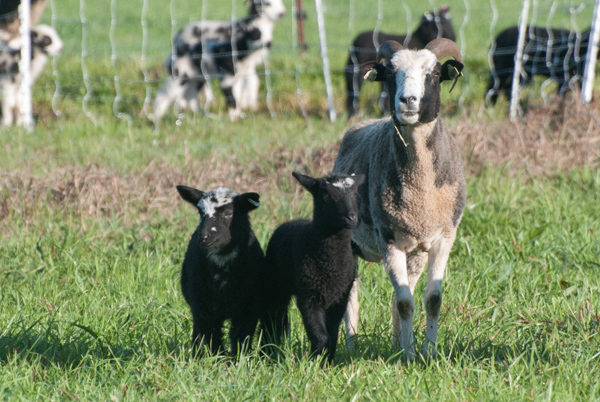
Meridian Estelle also with crossbred lambs.
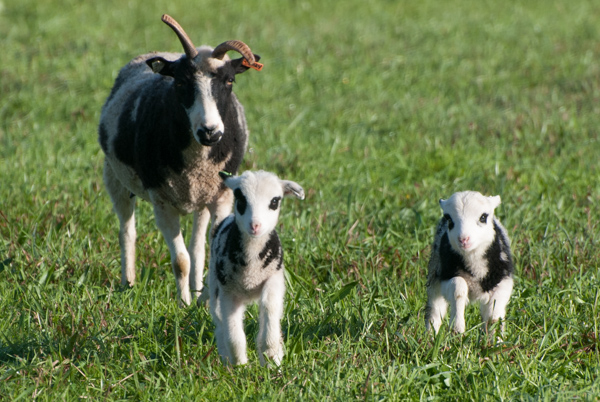
Meridian Ruth. Lambs sired by Catalyst.
And while we're at it let's throw in another springtime photo.
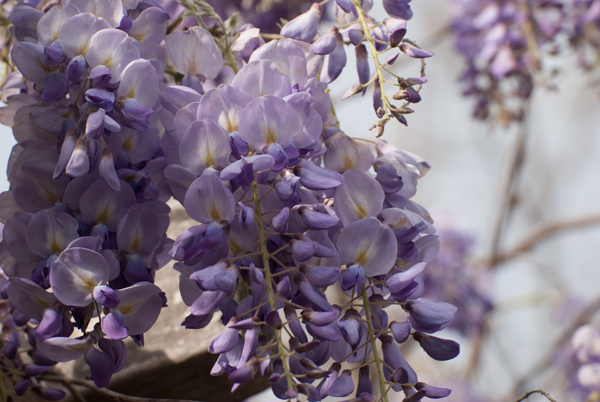
The wisteria has started to bloom.
It's still a little wet in these fields and I'm leery of causing soil compaction, but I really wanted to get the sheep out yesterday.
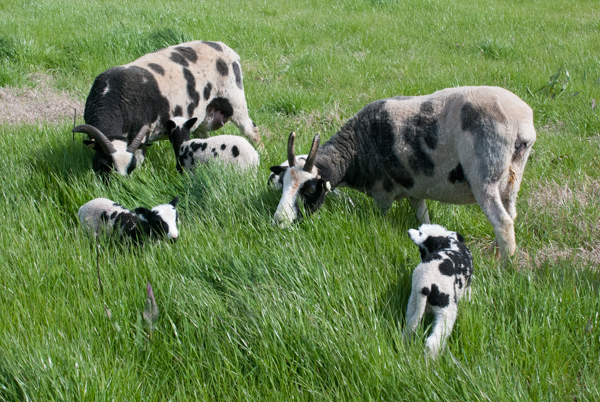
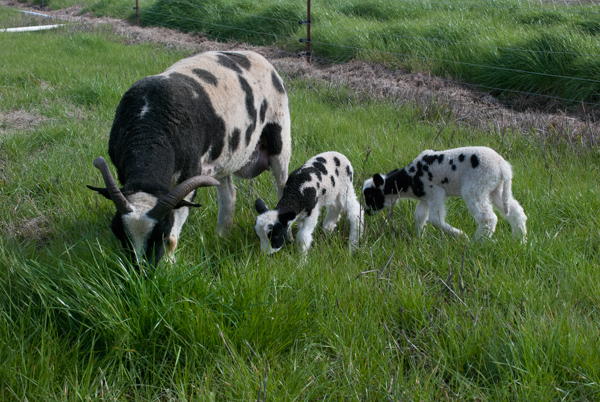
The ewes and lambs are in one field.
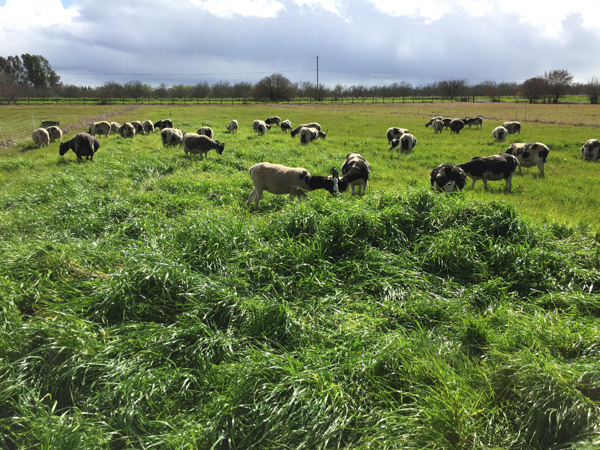
The pregnant ewes are in another pasture.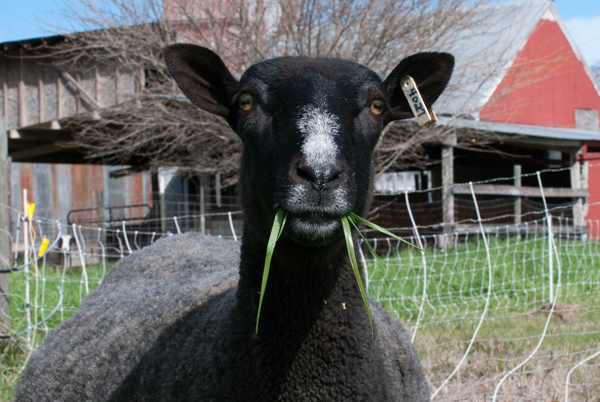
This is Esmerelda, happy to be grazing green grass.
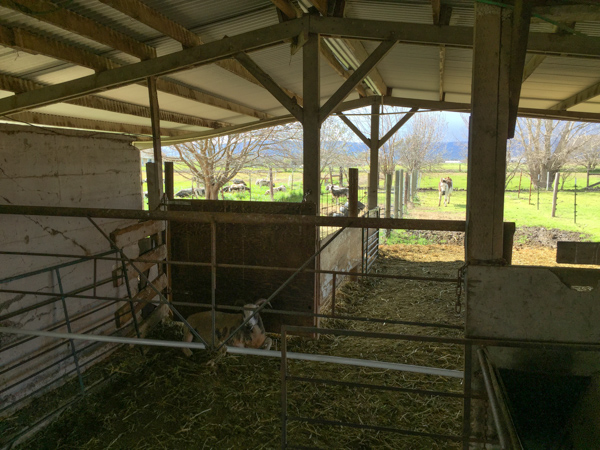
Here is an indicator of a ewe that is ready to lamb--all the other sheep went to the pasture after three months locked in the barn and she chooses to stay inside.
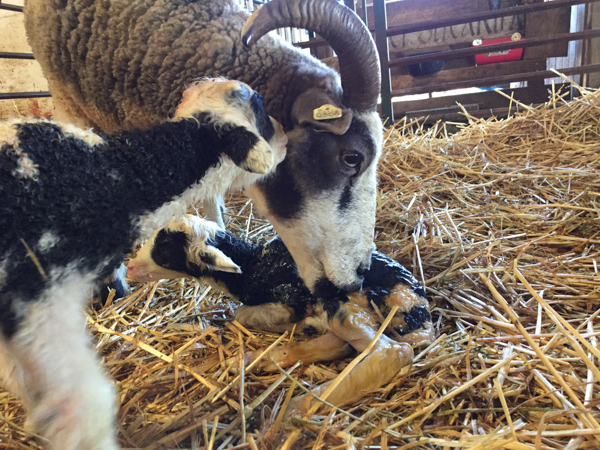
Sure enough! Foxglove had lambs a few hours later.
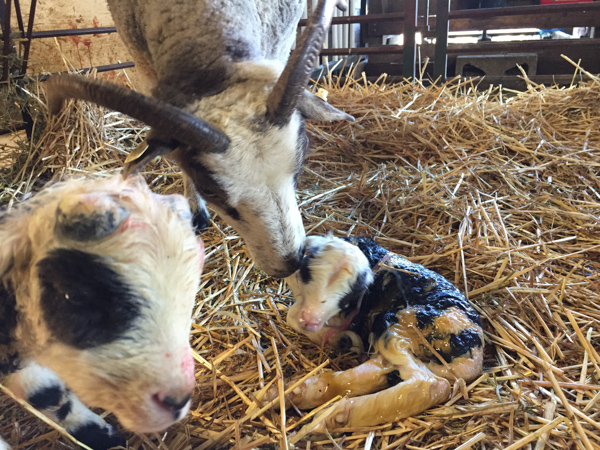
Take a look at the horns on her ram lamb.
Photos taken in the barn last night with my phone.
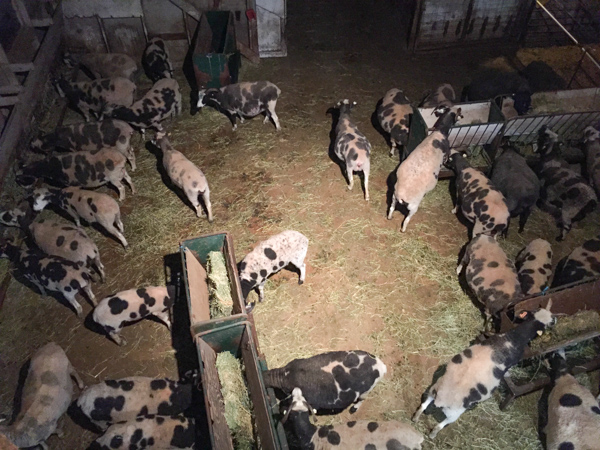
These are the pregnant ewes and a couple of wethers (including that very freckled one in the middle).
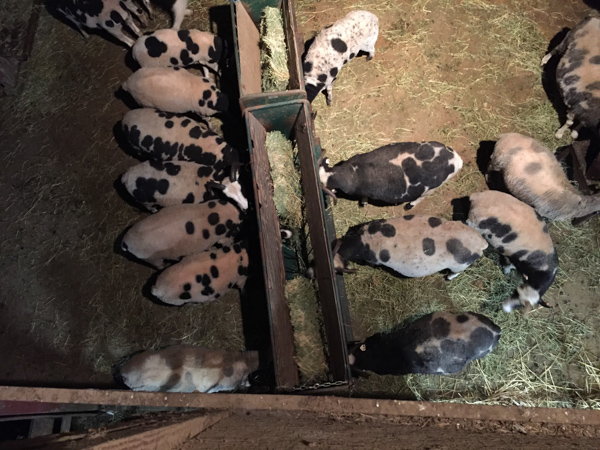
Photos over the lambing pens:
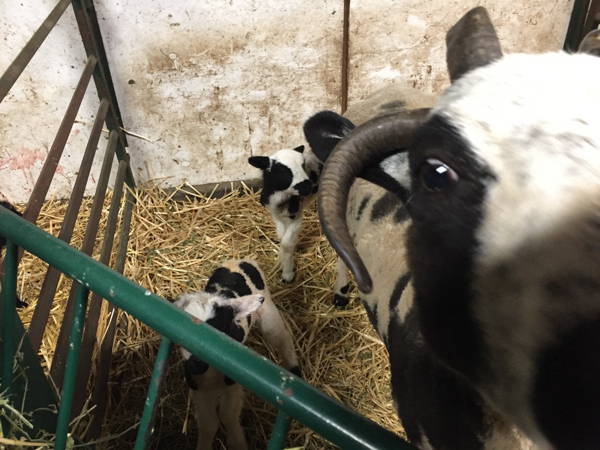
Mae's lambs born yesterday.
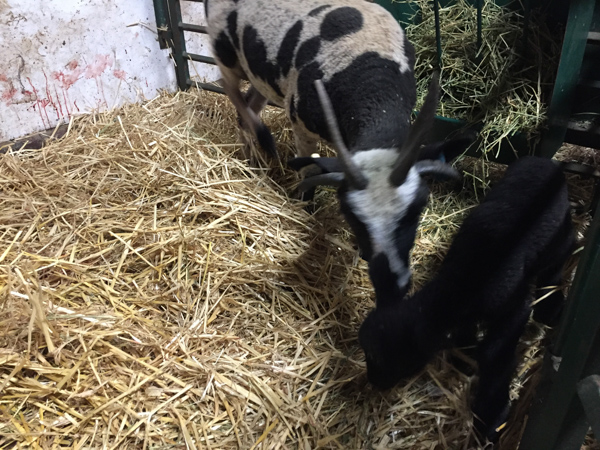
Marilla and her BFL-x lamb born yesterday...in motion...in the dark.
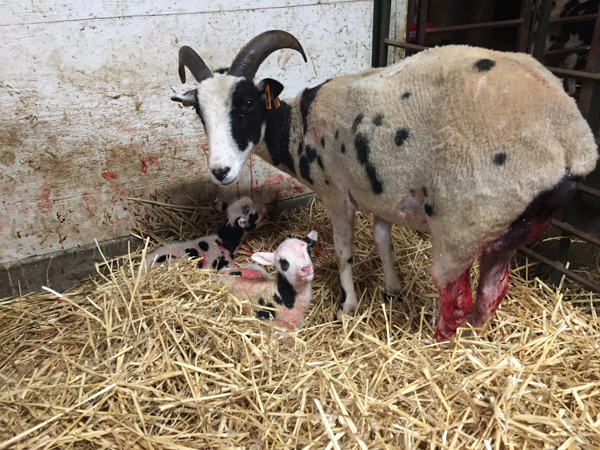
Skye and her twins also from yesterday.
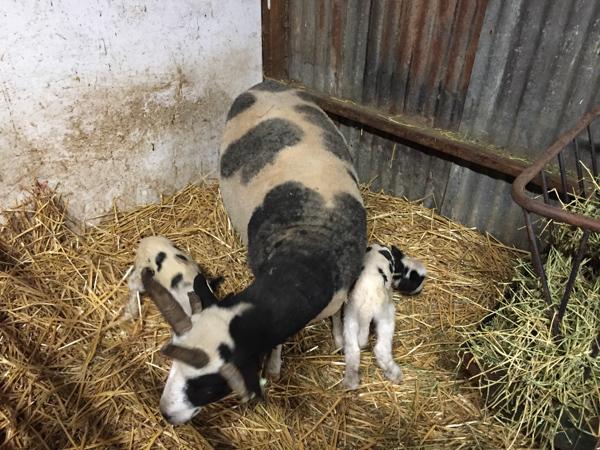
Sonata's lambs, born yesterday.
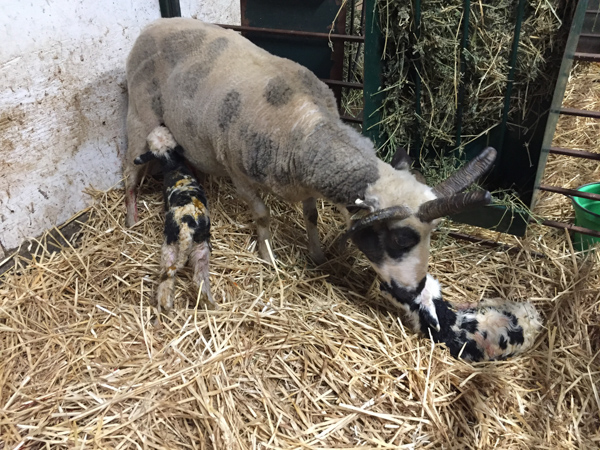
Windy Acres Bronagh and lambs, born during the night, which is one reason I was taking photos...waiting for lambs.
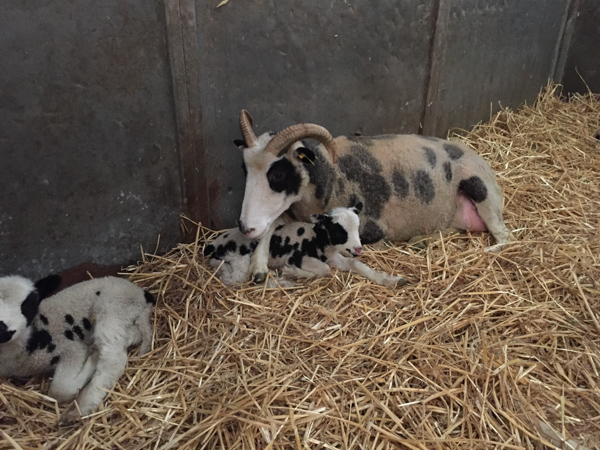
Bide a wee Hallie and her lambs, a few days old.
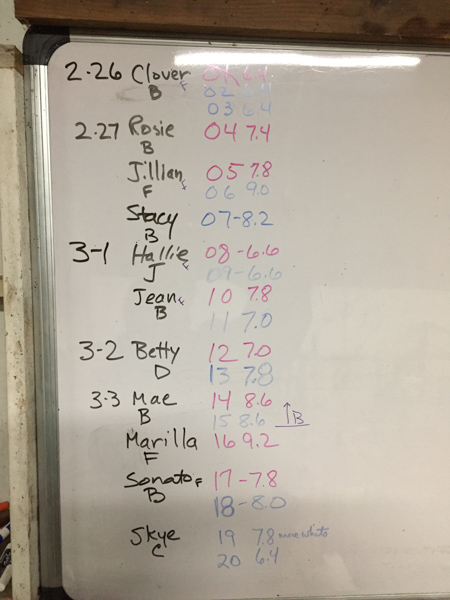
This is the list so far except for Bronagh.
Every year I put together a Flock List for the Farm Club members. This includes photos and a little information about each sheep (and dog and other characters) on the farm. I like to get current photos of each sheep and I'll share a few here. Shearing Day is in just a month so they are in almost full fleece. I'll have to get before and after shots of them as well. 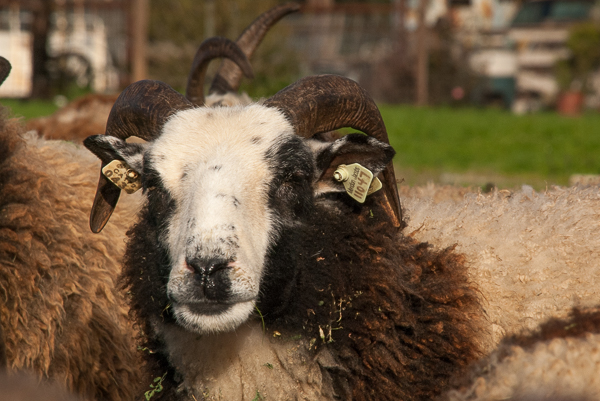 Zoey.
Zoey.
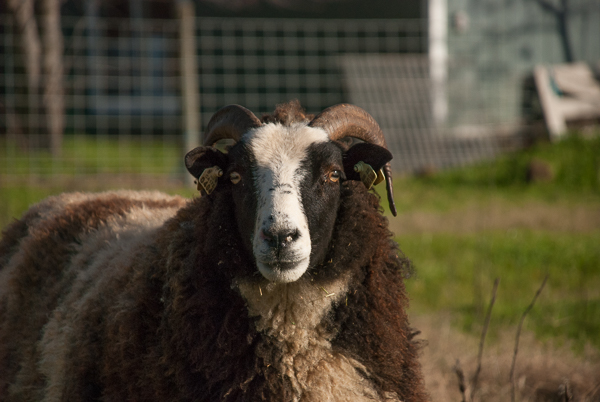
Alexandria.
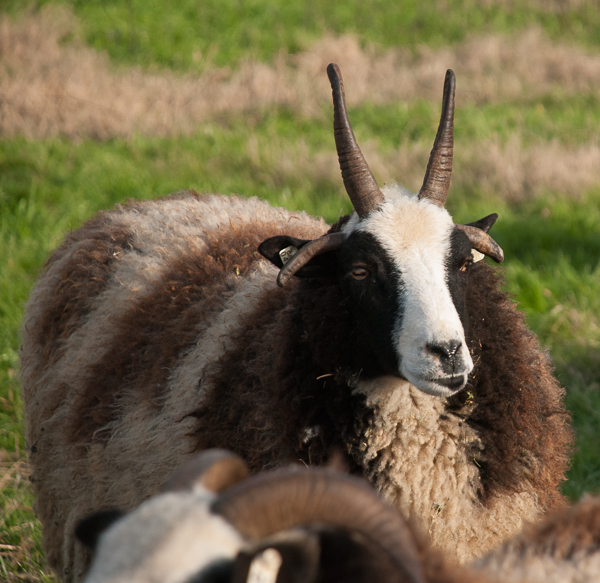
Sonata.
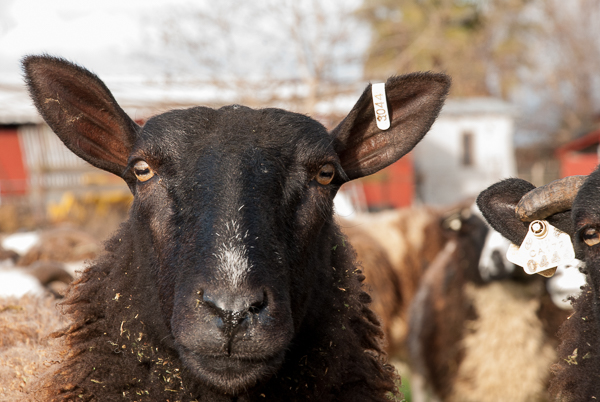
Ears.
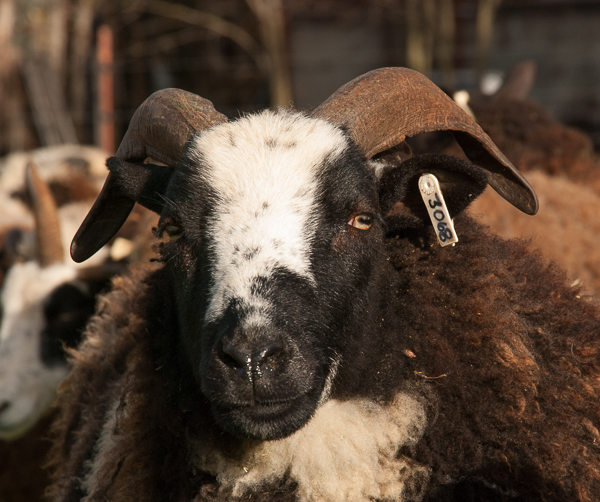
Cascade.
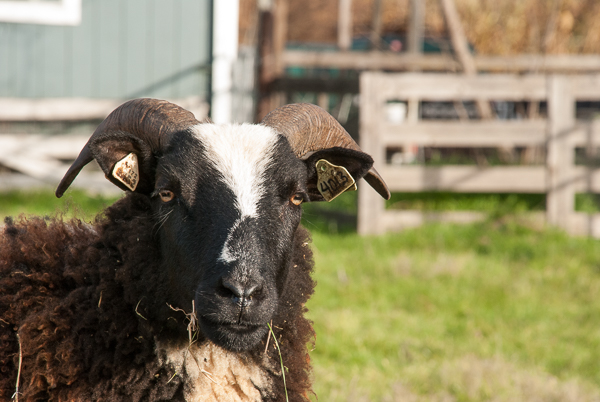
Jean.
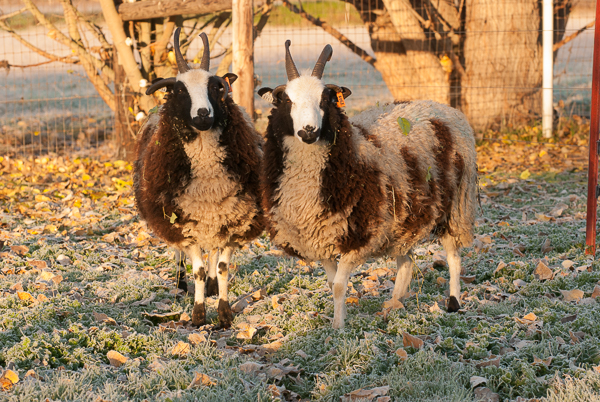
Two almost 2-year-olds, Honey and Zinnia.
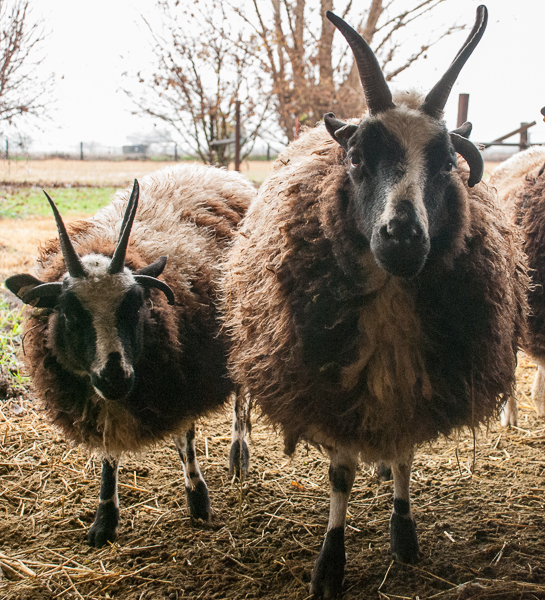
Marilla, a 2016 lamb, and her mother, Marilyn.
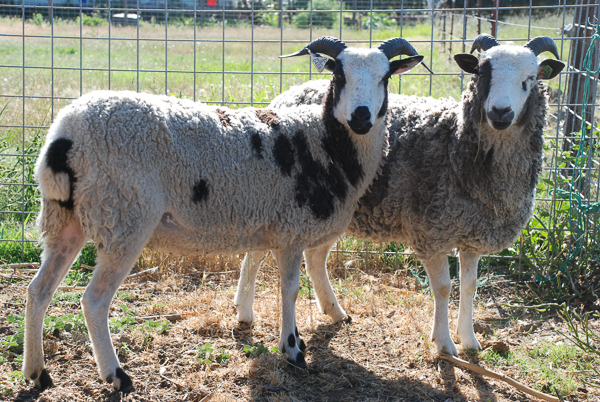
This photo was taking during the summer of two of the sheep I bought from flocks in Oregon. That is Kenleigh's Sheena on the left and Shadow Mountain Shelby on the right. I found this photo while I was looking for another. It is a good example showing a lilac ewe (right) and a black and white ewe.
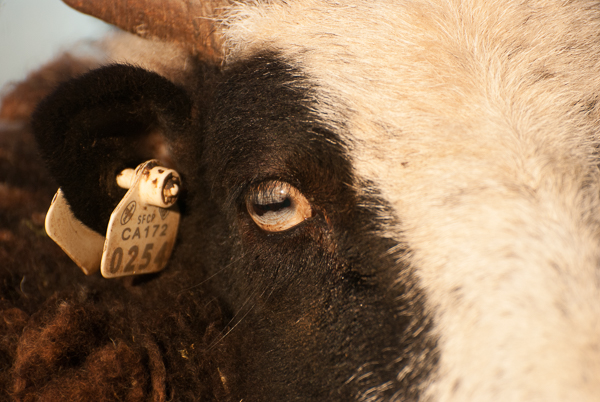
Most sheep eyes.
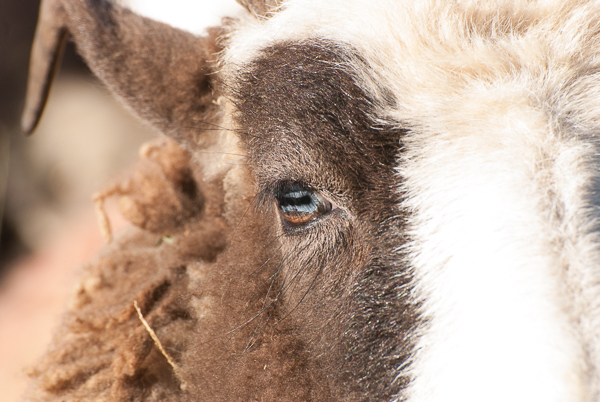
Some of the lilac sheep have striking blue eyes
We all have to make difficult decisions at times. I was in that position last month about a ram I had bought only a couple of months previously. Today I had confirmation that I made the right call. WARNING: There are some yucky photos part way through this post. I wrote this blog post about the trip to pick up a new ram in early August. I have looked through my photos and can't find a "before" photo of the left side of Legolas. This is the one that was posted on Facebook by the seller:

In early September I noticed that his horn looked like this on the left:

That left horn is touching his face. I knew that the horn wasn't like that when I bought the ram and I was amazed that it could grow so fast that in a month. There was no obvious sign of damage. I had noticed flies around his horns, but again, no sign of blood or a wound. With the horn that close to his face it would be a problem if it continued to grow that direction, putting pressure on the jaw. Even if it didn't grow more there would be continued skin irritation at the point of contact.
A few days later I caught Legolas to figure out what to do about that horn. I couldn't even get my finger between the horn and the jaw. Here is what surprised me. When I held the horn not only did it move, but I could see movement in part of the skull where the horn was attached. Yikes!

Behind the horns I found a small opening, which got a little bigger as I scrubbed with hydrogen peroxide. This had been covered with hair and really wasn't visible until I started cleaning up around it. I could squeeze out a little bit of pus but not very much. There was minimal blood or drainage and the edges of that wound looked already healed over, just not healed together to close up the pocket.

I could move the horn (and skull) so that there was a little space between the horn and the jaw, so I tried to anchor the horn in place with duct tape and wire attached to the other horn. (This was the most mild-mannered ram I've ever worked with.)

This is all the progress that was made by that--not much but better than touching the jaw.

That pink stuff is Swat to keep flies away. As I was working on this I was thinking that I didn't remember these rams fighting, but that would be the only way to account for this injury. At the time I think I just had Catalyst and Marv in the ram pen. When I first brought this ram home I used the "buddy-up" pen, a very VERY small pen where the rams can tussle with each other but not move backwards and run at each other. They usually fight in this small pen where they can barely turn around and when they move to the big pen after a couple of days they mostly behave themselves. They may still posture and fight but hopefully they quickly figure out the hierarchy and the hitting isn't as violent.
I looked back through my videos and found one of Catalyst (another two-horn ram) and Legolas making some pretty hard hits. Then I remembered that a few days after I moved them all out to the ram pen I was worried about Legolas. He seemed "off", shaking his head and not eating much. Nasal bots will make sheep very uncomfortable.
Legolas also had bloody lips and gums. I remembered talking to my vet to find out if that was a another symptom of bluetongue because bluetongue causes edema, ulceration, and soreness of the mouth, in addition to listlessness and not eating (because of the sore mouth). At that time I treated him for nasal bots and with antibiotics to prevent secondary infection due to bluetongue. Eventually he got better.
But now, a month later, I realized that he had probably been injured the month prior but the damage to his skull was not obvious.
The wire and duct tape didn't work. I didn't take long for Legolas to start scratching and rubbing on the tree and fence and put the horn right back where it had been. I thought about using rebar or something stouter but I knew that I wouldn't be able to rig up something stable enough to keep the horn in place and besides I wasn't able to move it enough to be a long term fix. This was not a sustainable situation.
I made the decision to put the ram in the freezer. I am in the sheep business, not the sheep rehab and geriatrics business. Butchering the ram would provide meat and I would have his hide and skull to sell.
Before I can sell the skull it needs to be cleaned. I take the easy way out and put it out in the back and let nature take its course. Today some Farm Club members were here and some of them wanted to see the skull. I was amazed that we could clearly see the damage done to the skull by the fighting. This photo shows the skull fracture clearly:
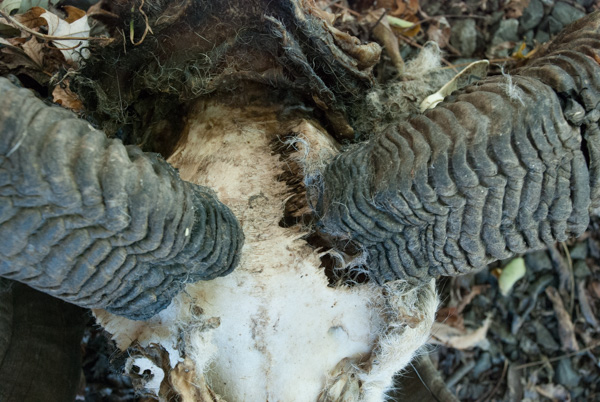
I have had two other rams die from fighting. Once, early on in my Jacob-raising days, one ram killed another (a 6-month old ram lamb owned by my friend but here for breeding) through the electric fence. The ram lamb was standing when I went into the barn and lying dead at the fence when I came out. (I tried butchering that one myself but that wasn't so easy. Now that I'm thinking of that I remember that my daughter and I finally dug a hole to bury him, thinking that eventually we'd be able to dig up a skeleton--she was taking a taxidermy class at the time.) Now I do all I can to separate breeding groups without fence-line contact. Another time I was watching when two rams (that had been buddies just a moment ago) started fighting and one staggered away and finally dropped. I took a wheelbarrow in to the pen to get him out and found that he was still breathing. I guess he was in a coma because it's not normal to be able to load a living adult ram into a wheelbarrow, but I did. I was able to have that one butchered to salvage meat and hide.
The other memorable fighting ram story is about Ranger, a ram that had a beautiful fleece and personality. He wasn't killed fighting but suffered a skull fracture. With that one I discovered how serious it was when I saw his eye bulging from it's socket. The swelling in his head was so bad that it pushed the eye forward and the lid couldn't close over it. I don't remember if the vet came out or we just talked on the phone, but remember treating and covering the eye and I kept the ram in a small pen until the swelling went down and there was no movement of the horn and skull.
At the time I asked the vet how to tell if there was brain damage. I still remember her answer: "It's not like he has to drive heavy machinery."
For almost four weeks I've had sheep in five different breeding groups plus a non-breeding group. It doesn't take long before I'm tired of dealing with that. By last Friday all the ewes were marked and very few were being re-marked so it was time to pull out a few rams.
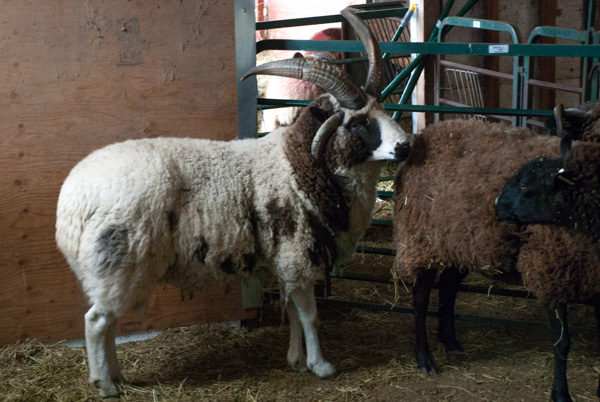
Dragon, this 4-horn ram, went back to his farm up the rad from here. Buster went with him to finish up the job there. Joker went back to the ram pen with Marv (after spending a couple of days in the "buddy-up" pen, or "jail" as I also think of it.
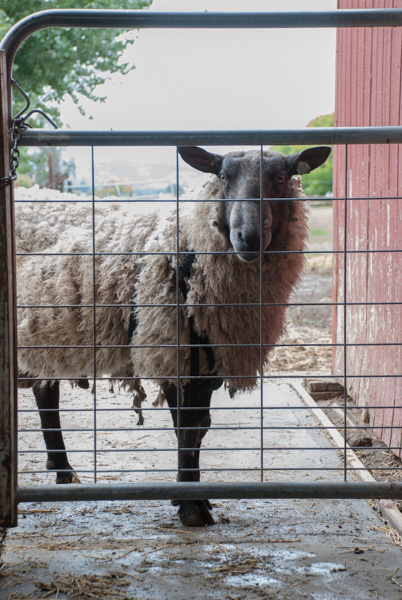
Faulkner was a lucky ram who got to stay out with his ewes for another month or so. However, he knew that something was going on in the barn and thought that maybe he should really have a few more ewes on his side of the gate.
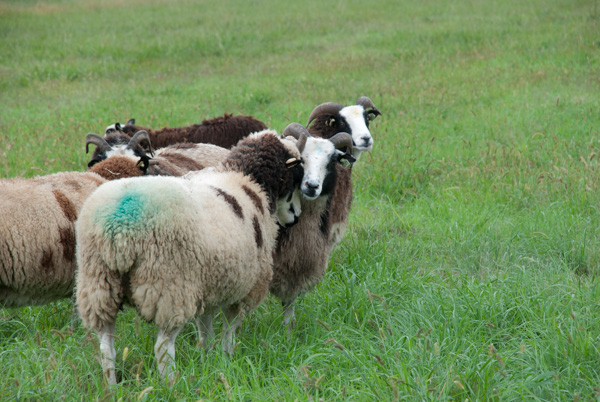
All the rest of the ewes were consolidated into one group and spent some time meeting and greeting.
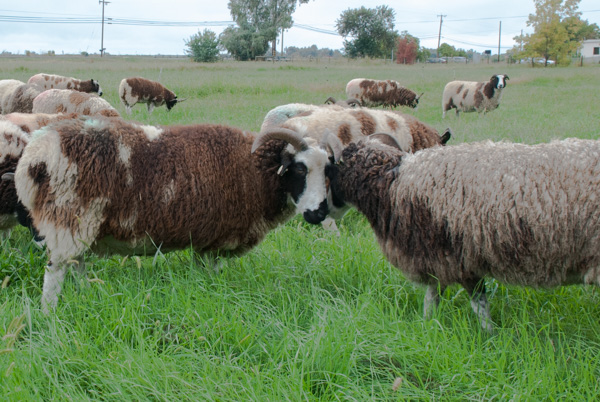
"How are you Fran? Did you hear what happened to...?"
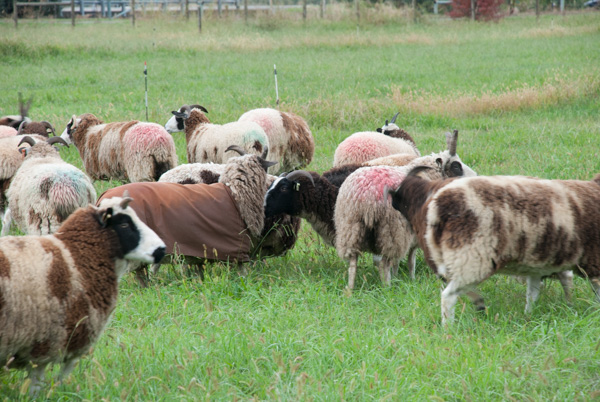
"What is that scent you're wearing?...Who have you been hanging around?"
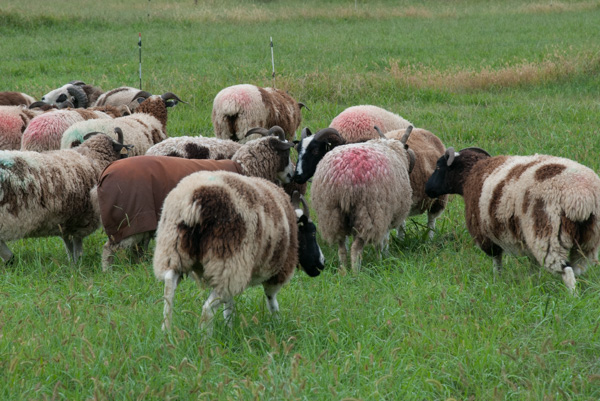
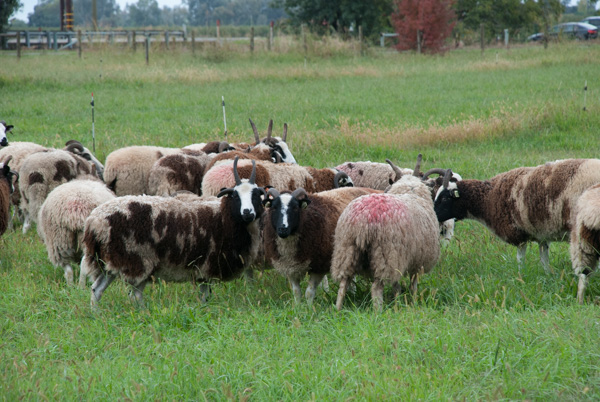
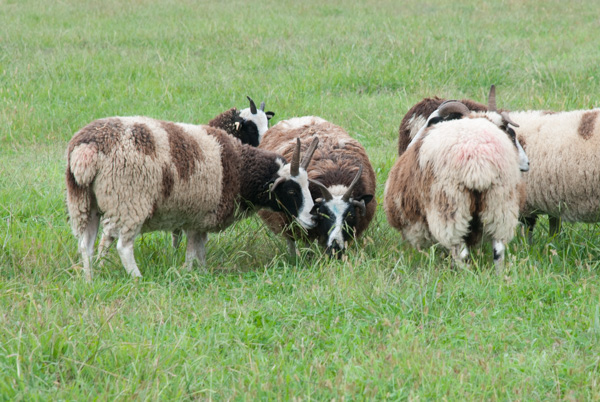
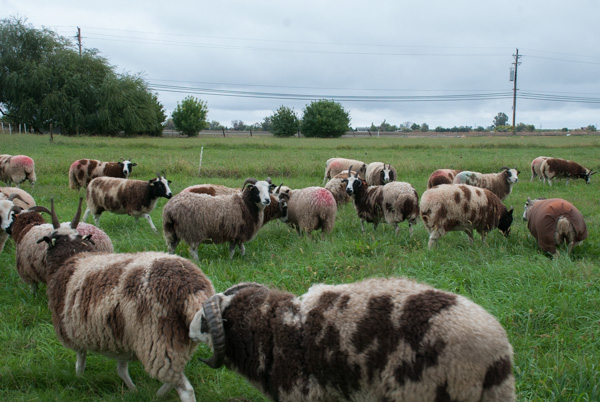
Catalyst is the Jacob ram who stayed out with the ewes. He spent some time introducing himself to the ewes who had been in the other groups but they all ignored him.
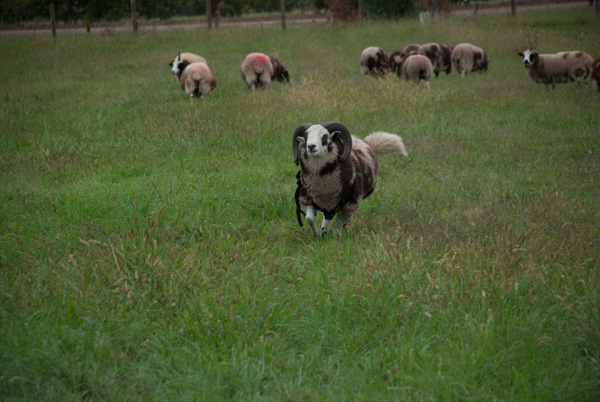
Here is he after another couple of ewes were turned into the field.
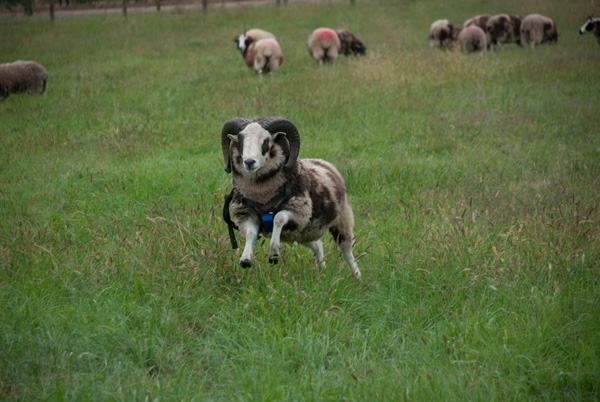
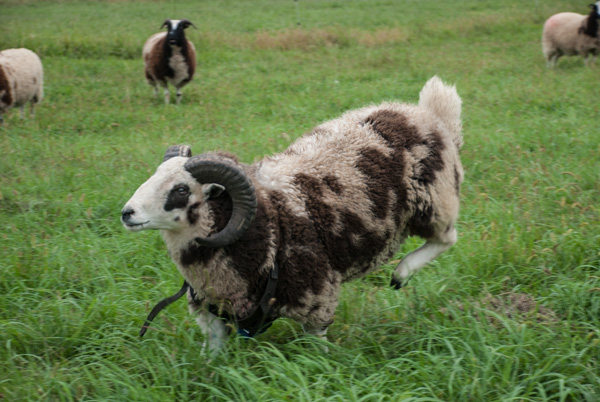
Happy boy even though he's not seeing any action.
This week it was time to separate sheep into breeding groups. After much debate and deliberation I ended up using five rams this year. I don't NEED five rams for the number of ewes I have but it's always fun to find out how each ram will match with the flock...and there is also a bit of "not putting all one's eggs in one basket". There are a lot of criteria in selecting a ram to buy or a ram lamb to keep in the flock.
Fleece is the most important characteristic for me. If I don't like a ram's fleece then I don't want to use him no matter how great he looks otherwise. I want to stay within the Jacob breed standards but consider fleece weight, fiber diameter (determines if a fleece is soft or scratchy), crimp, and freckling. One problem with making decisions about young rams is that you're better off waiting until 18 months to fully evaluate fleeces. That is a long time to hang onto a ram and then decide he stays or goes. With my small acreage I just can't hang onto several rams to evaluate a year later. I need to make my best guess at about six months old.

Horns. You can have the best ram from all the other standpoints, but if the horns grow into the face he will have to go. Here is a blog post with examples of two-horn rams.
Color. The Jacob Breed Standard states that registered sheep must have 15-85% color. That's a broad range, but not all sheep fit that category.

Jerry is a 5-year-old wether who won the sheep-lottery by having a beautiful fleece, but with too much color to be kept as a breeding ram. He was castrated as a lamb and was kept to be a buddy to any sheep who had to be separated from the flock. He lives permanently with Faulkner, the BFL ram. Also note how narrow his horns are. If he had not been castrated those horns would have grown tight onto his neck or face.
There is more, but this was going to be a post about the rams I am using this year, not a how-to-choose-your-flock-sire post. However other traits to consider are personality (yes, really), conformation, size, birth weight, gain, and is he a single/twin/triplet.

I hadn't planned on keeping Meridian Joker, but as I looked at lamb weights over the last few months he stood out as one of the heavier ones. I sell at least half the lambs for butcher and the sooner they can be sold the better. So rate of gain is important. His horns don't have a huge spread, but hopefully they will be all right as he grows.
By the way all the rams in these photos are wearing marking harnesses with red crayons. That's what all the color is.
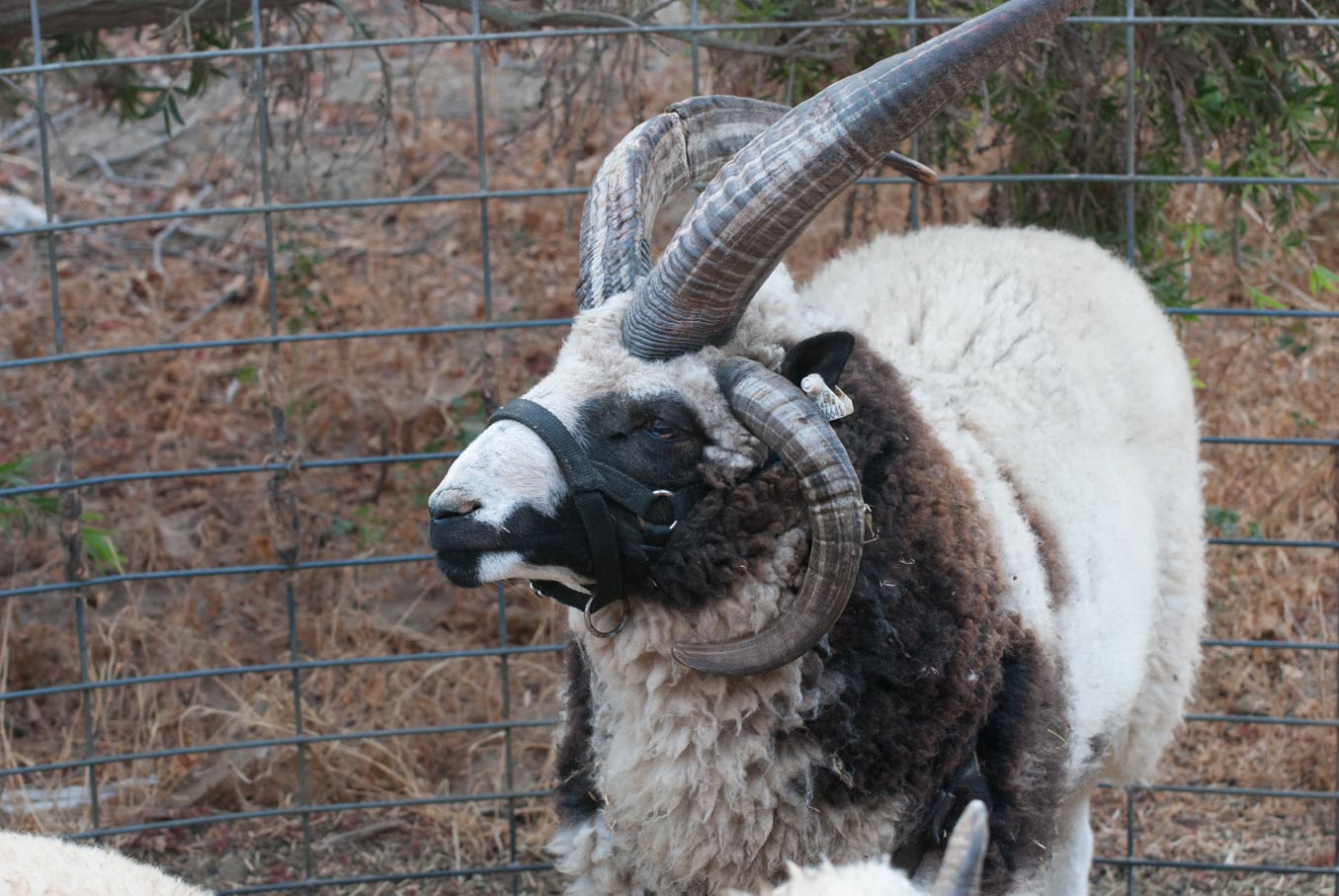 Starthist Dragon is on loan from a friend. When I evaluated his lamb fleece a couple of years ago I was impressed and Trish remembered that so offered him for the season.
Starthist Dragon is on loan from a friend. When I evaluated his lamb fleece a couple of years ago I was impressed and Trish remembered that so offered him for the season.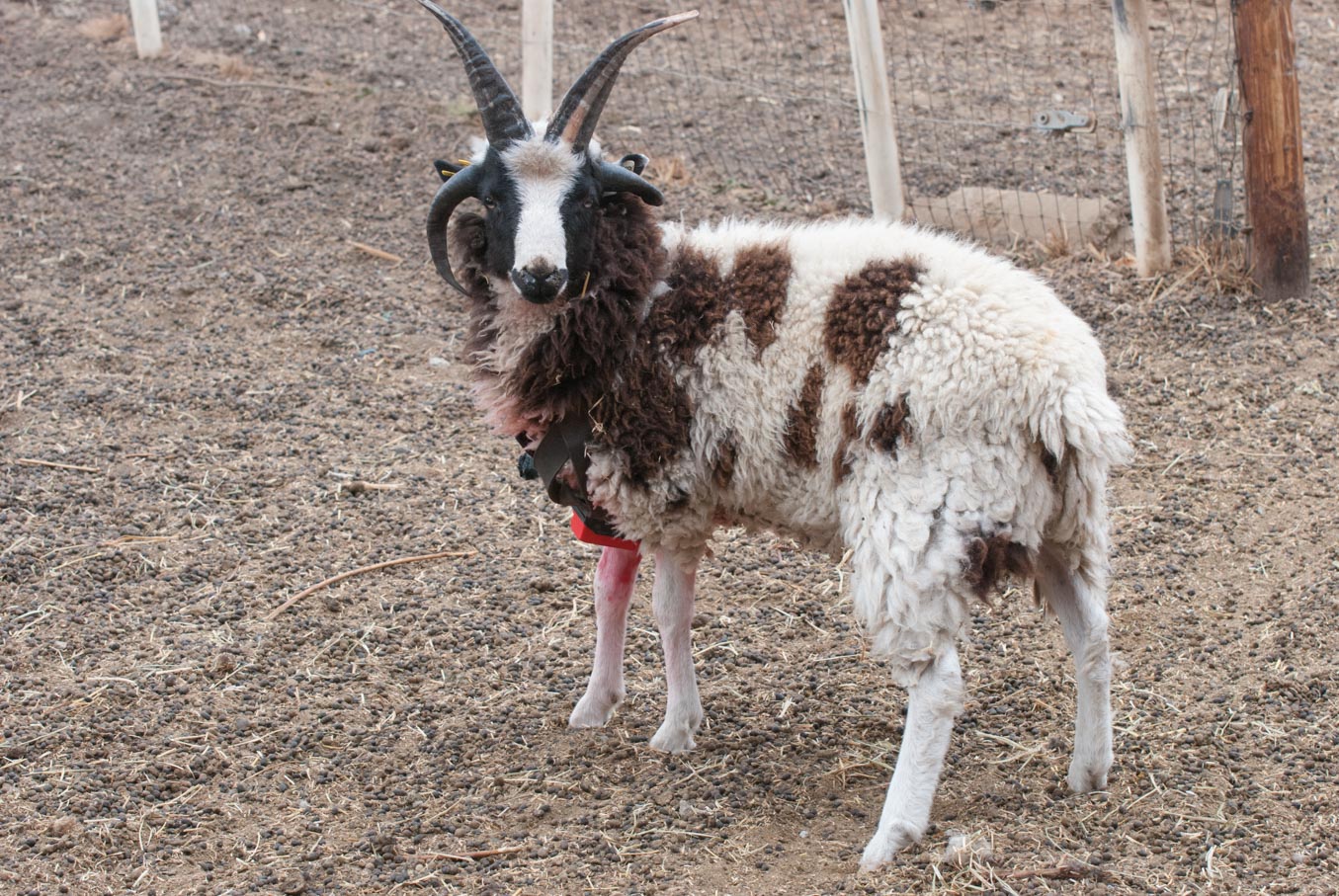 Bide a wee Buster came here from Oregon last June. He was so small I had my doubts about him being up for the task this month, but I should have had faith.
Bide a wee Buster came here from Oregon last June. He was so small I had my doubts about him being up for the task this month, but I should have had faith.
Meridian Catalyst is a ram who was born at the 2015 State Fair Nursery. He is a lilac ram with nice fleece and markings. That's him in the middle of the ewes on the second day of breeding season.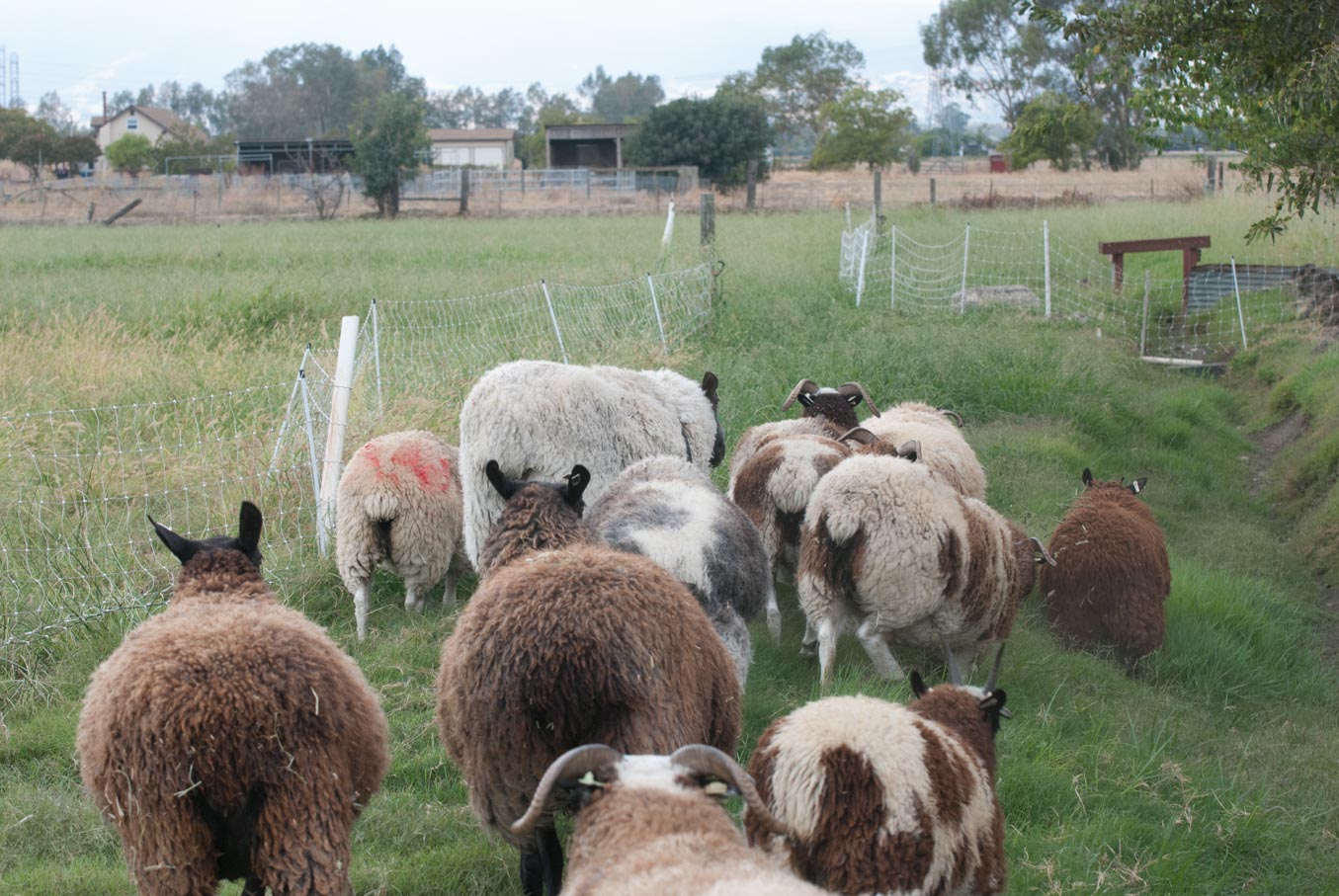 Faulker is ram #5. He is a Bluefaced Leicester (BFL) and sires the black (brown) lambs. He is the big guy in the center of the photos. His lambs are larger than the 100% Jacob lambs and are mostly sold for meat although they have very pretty fleeces and also wind up in some spinners' flocks.
Faulker is ram #5. He is a Bluefaced Leicester (BFL) and sires the black (brown) lambs. He is the big guy in the center of the photos. His lambs are larger than the 100% Jacob lambs and are mostly sold for meat although they have very pretty fleeces and also wind up in some spinners' flocks.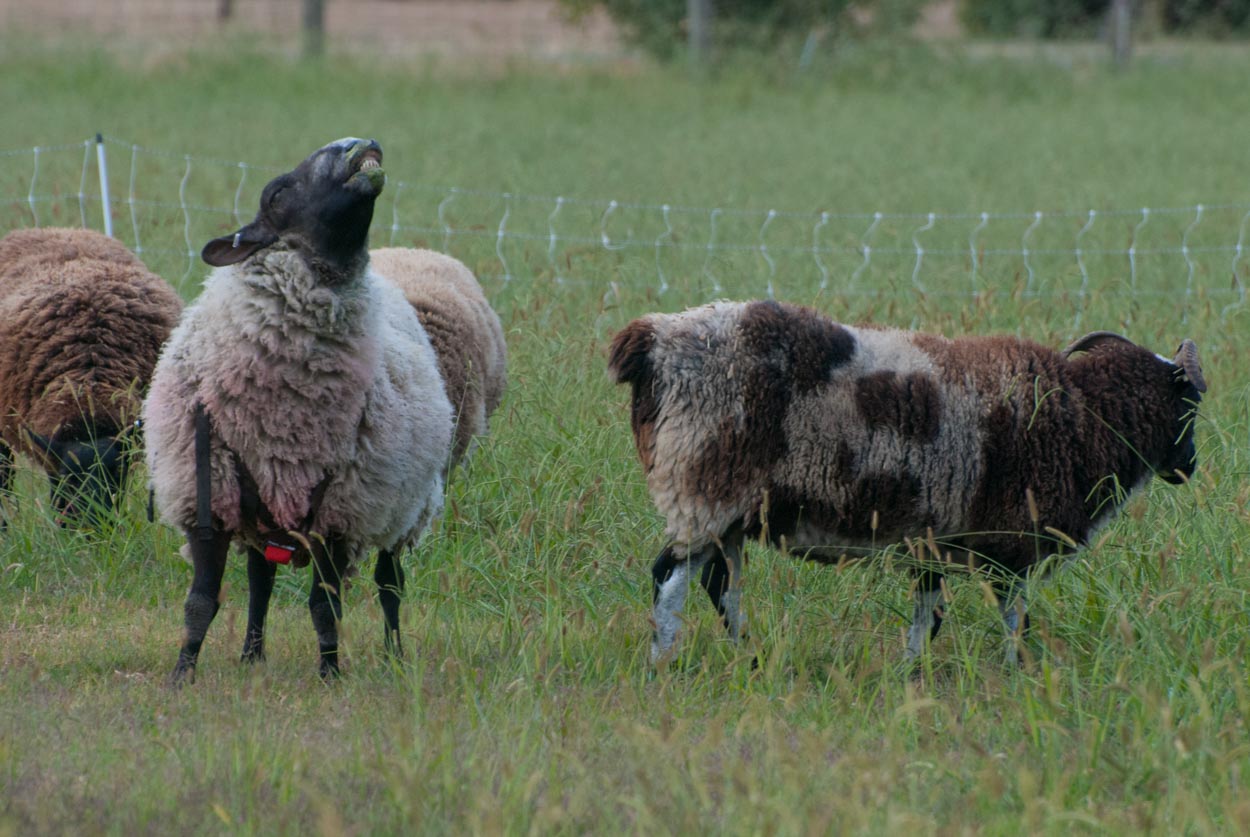 Faulkner enjoying some time with the ladies.
Faulkner enjoying some time with the ladies.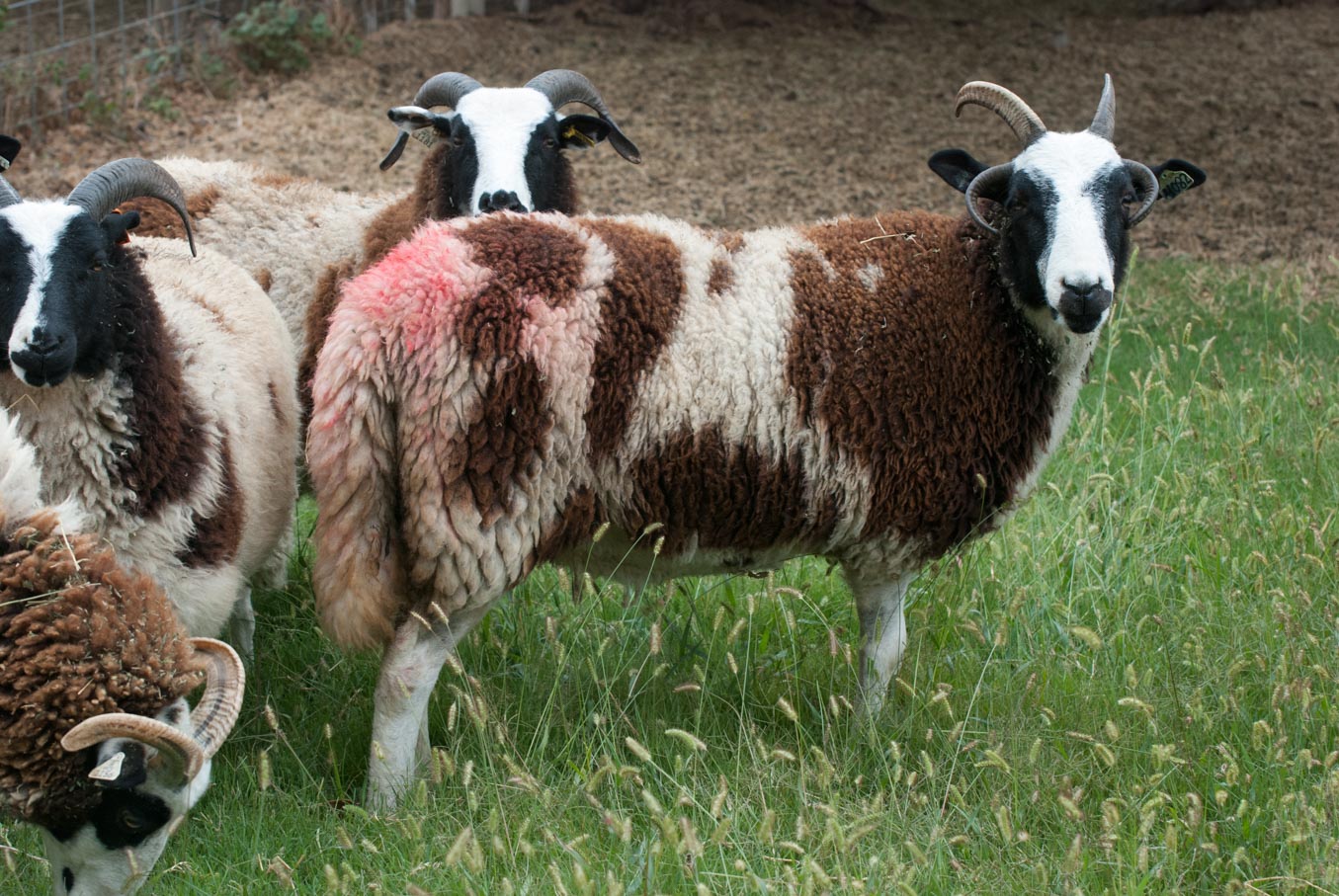 Isabelle, marked by Joker.
Isabelle, marked by Joker.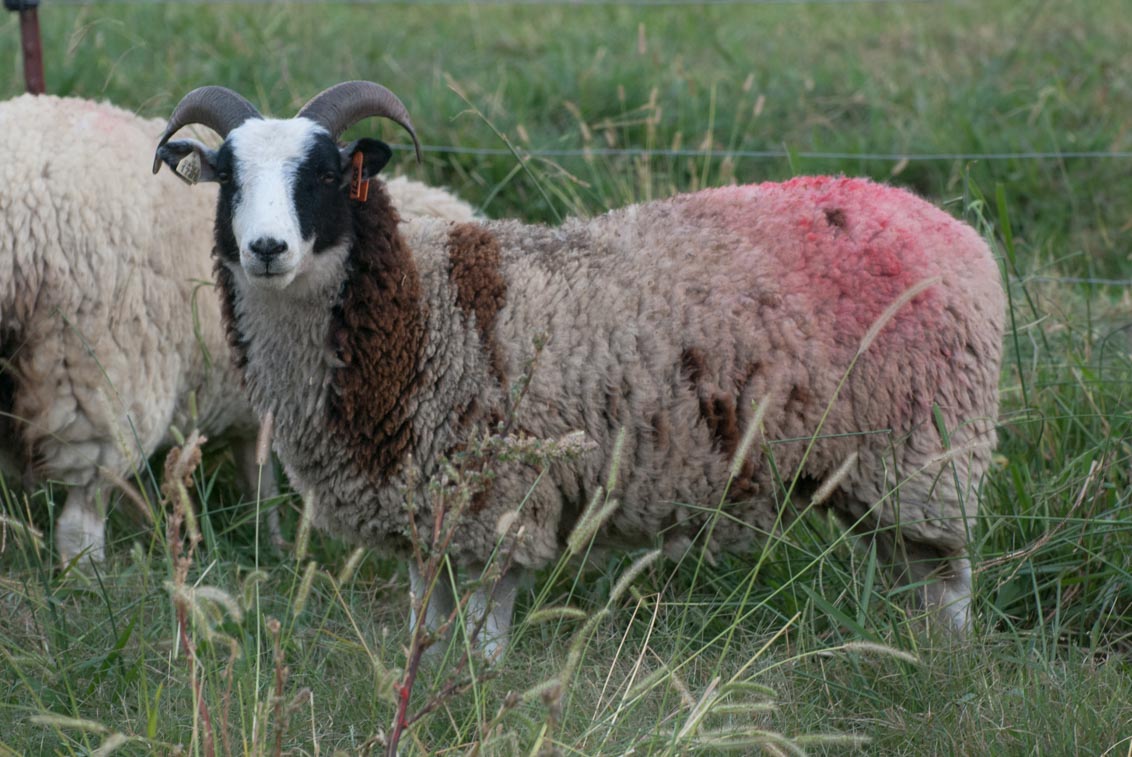 Skye is in Catalyst's group.
Skye is in Catalyst's group.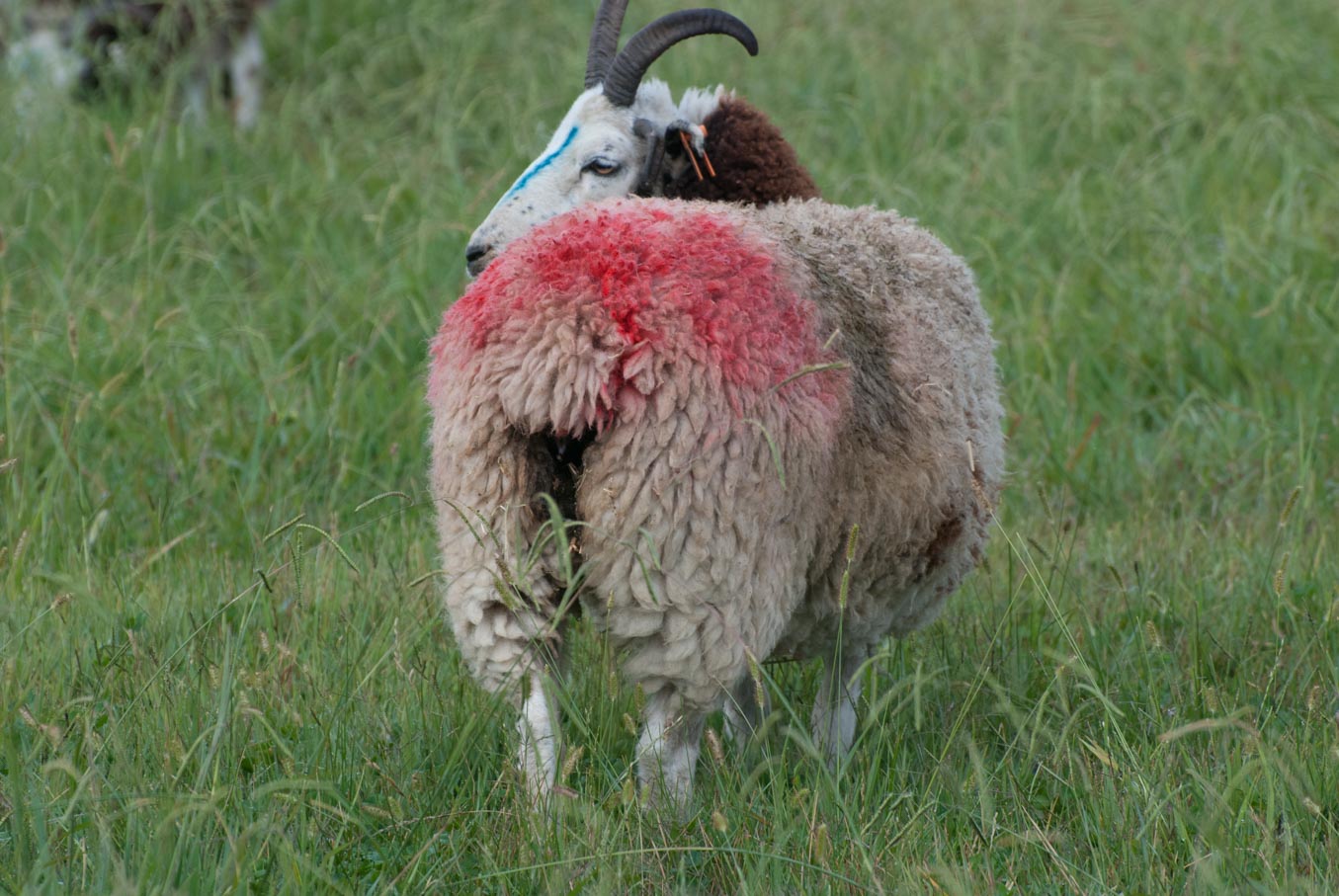 Jillian is with Faulkner.
Jillian is with Faulkner.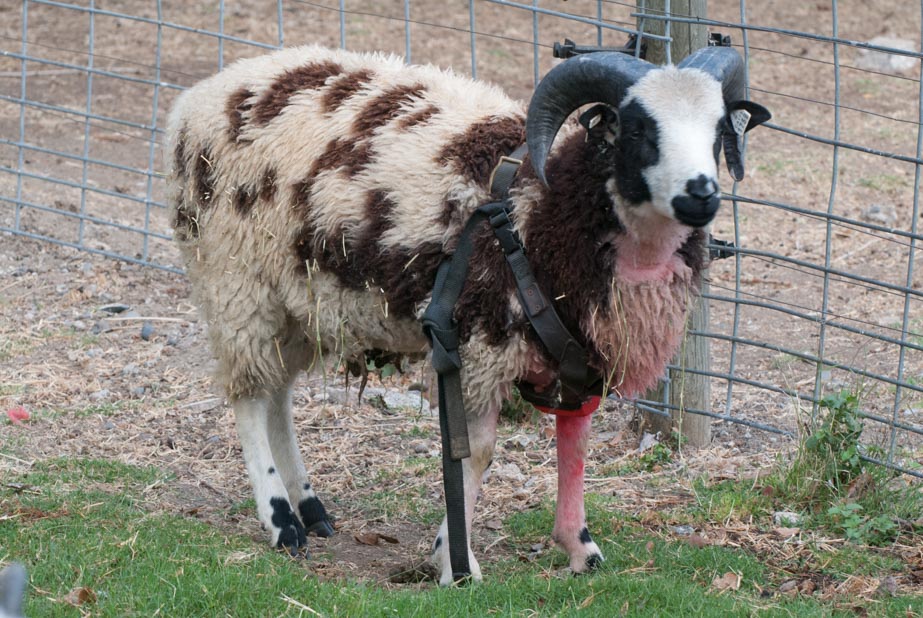 Joker looks a little disheveled after a few days.
Joker looks a little disheveled after a few days.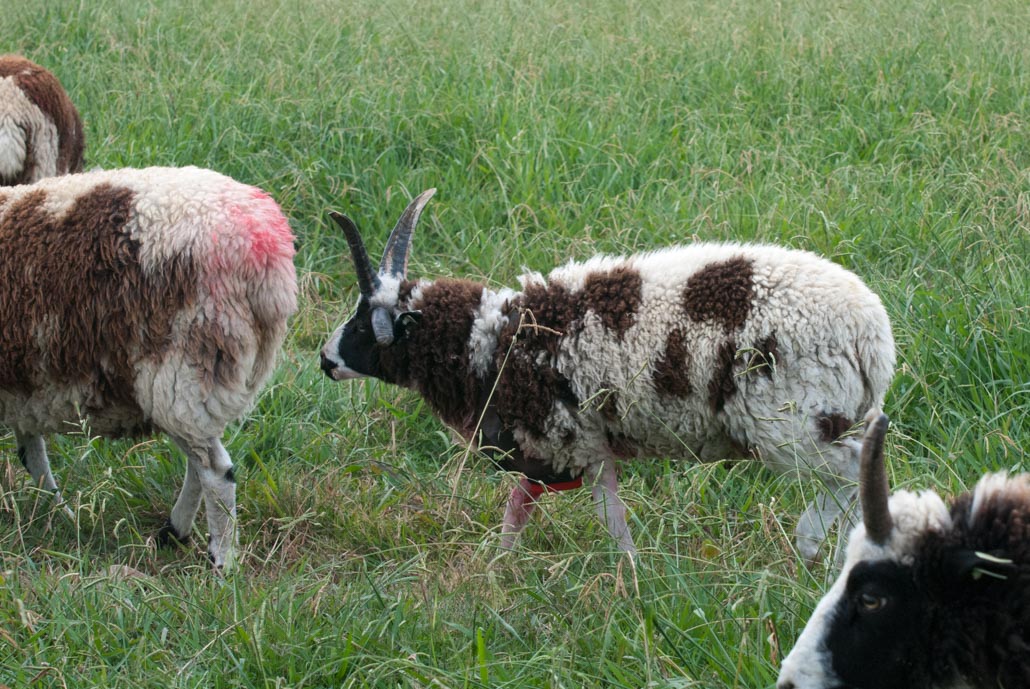 Buster has his work cut out for him to reach those big ewes...
Buster has his work cut out for him to reach those big ewes...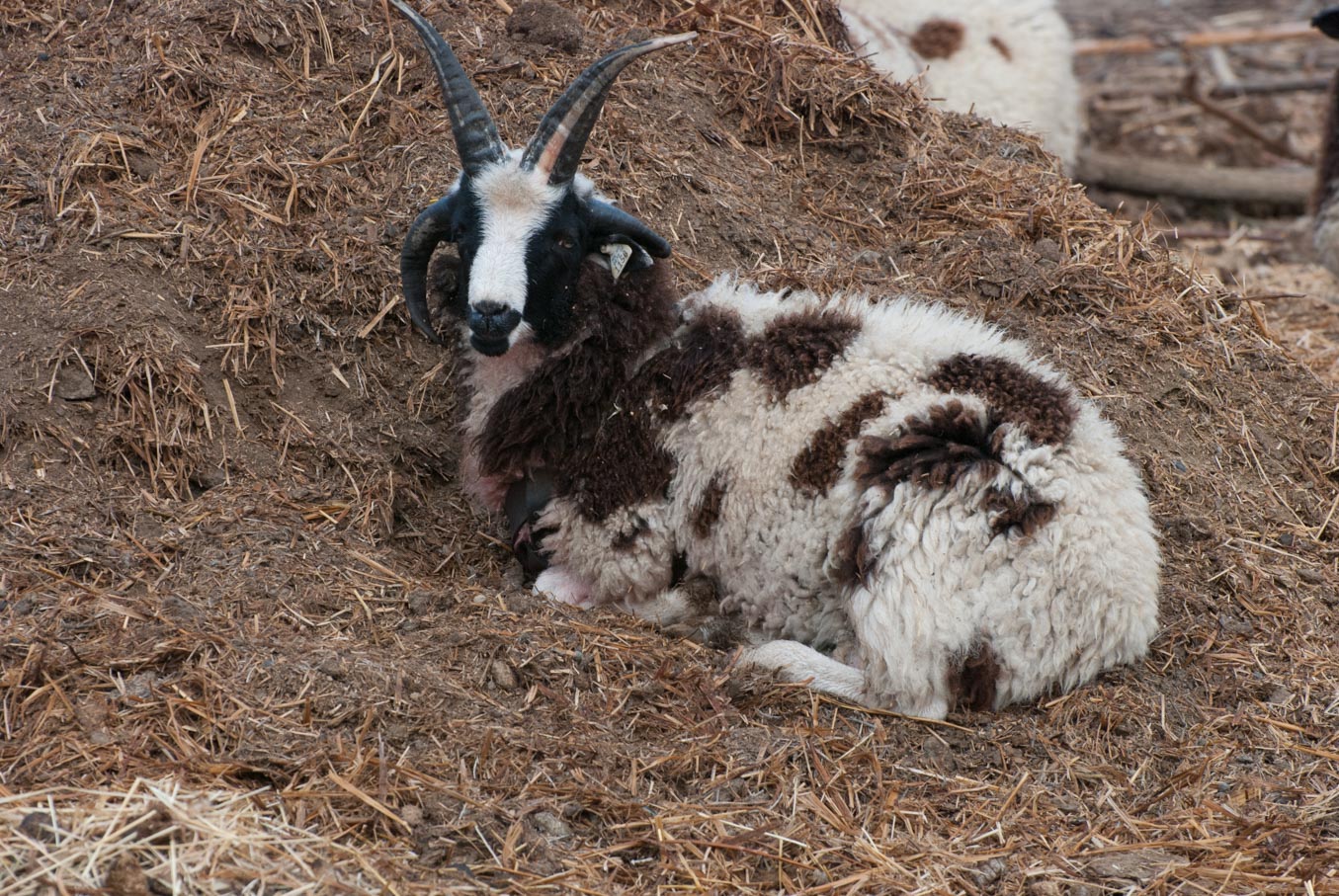 ...and needed a nap after the first morning out.
...and needed a nap after the first morning out.
For any of you who pay attention to this stuff and may be wondering about the other Jacob ram I bought this summer...I discovered a few weeks ago that he must have been injured by another ram and his horn had changed position so that it was growing right up against his jaw. I found that the point of attachment was movable (I don't know if went all the way to the skull which means that it would have been fractured). I tried to give his face a little more space by using wire and duct tape but that didn't work. This is not a sustainable situation so he is no longer with us.
At Meridian Jacobs farm we raise Jacob sheep and sell locally grown wool fiber, yarn, and handwoven goods. We teach fiber classes and sell Ashford, Clemes & Clemes, and Schacht spinning and weaving equipment. We encourage farm visits with field trips and our unique Farm Club.
Search blog posts since 2019. If the search says it can’t find a post try putting in your search word a second time. I don’t know why but the second time it seems to work.
Search the entire website, including older blog posts.